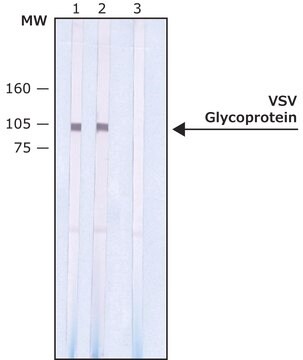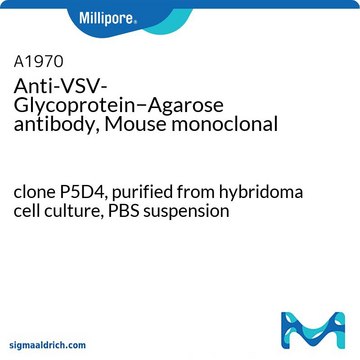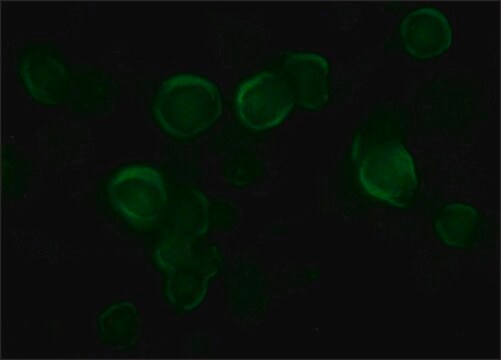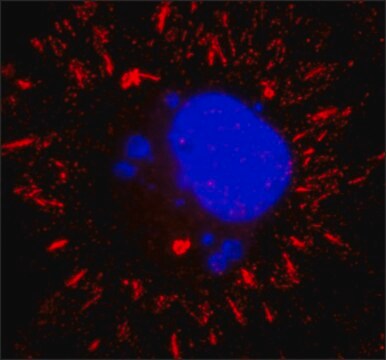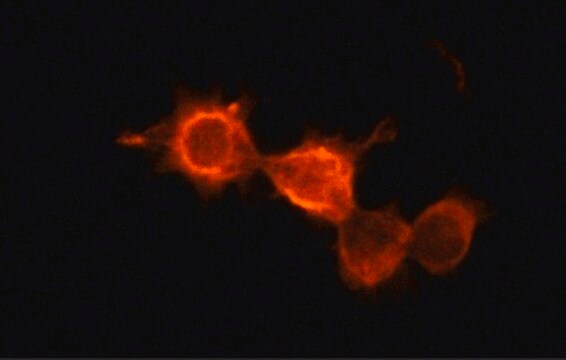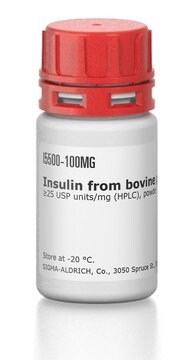A5977
Anti-VSV-G−Peroxidase antibody, Mouse monoclonal
1.0-1.5 mg/mL, clone P5D4, purified from hybridoma cell culture
Synonym(s):
Monoclonal Anti-VSV Glycoprotein
About This Item
Recommended Products
biological source
mouse
Quality Level
conjugate
peroxidase conjugate
antibody form
purified from hybridoma cell culture
antibody product type
primary antibodies
clone
P5D4, monoclonal
form
lyophilized powder
concentration
1.0-1.5 mg/mL
technique(s)
western blot: 1:1,000 using 20-50 ng of a purified VSV-G tagged fusion protein
isotype
IgG1
shipped in
wet ice
storage temp.
2-8°C
Looking for similar products? Visit Product Comparison Guide
General description
Specificity
Immunogen
Application
Biochem/physiol Actions
Physical form
Reconstitution
Storage and Stability
Disclaimer
Not finding the right product?
Try our Product Selector Tool.
Signal Word
Warning
Hazard Statements
Precautionary Statements
Hazard Classifications
Skin Sens. 1
Storage Class Code
13 - Non Combustible Solids
WGK
WGK 2
Flash Point(F)
Not applicable
Flash Point(C)
Not applicable
Regulatory Listings
Regulatory Listings are mainly provided for chemical products. Only limited information can be provided here for non-chemical products. No entry means none of the components are listed. It is the user’s obligation to ensure the safe and legal use of the product.
JAN Code
A5977-1VL-PW:
A5977-500UG-PW:
A5977-BULK:
IRO97899:
A5977-VAR:
IXO97899:
A5977-1VL:4548173186443
A5977-500UG:4548173275338
Certificates of Analysis (COA)
Search for Certificates of Analysis (COA) by entering the products Lot/Batch Number. Lot and Batch Numbers can be found on a product’s label following the words ‘Lot’ or ‘Batch’.
Already Own This Product?
Find documentation for the products that you have recently purchased in the Document Library.
Our team of scientists has experience in all areas of research including Life Science, Material Science, Chemical Synthesis, Chromatography, Analytical and many others.
Contact Technical Service